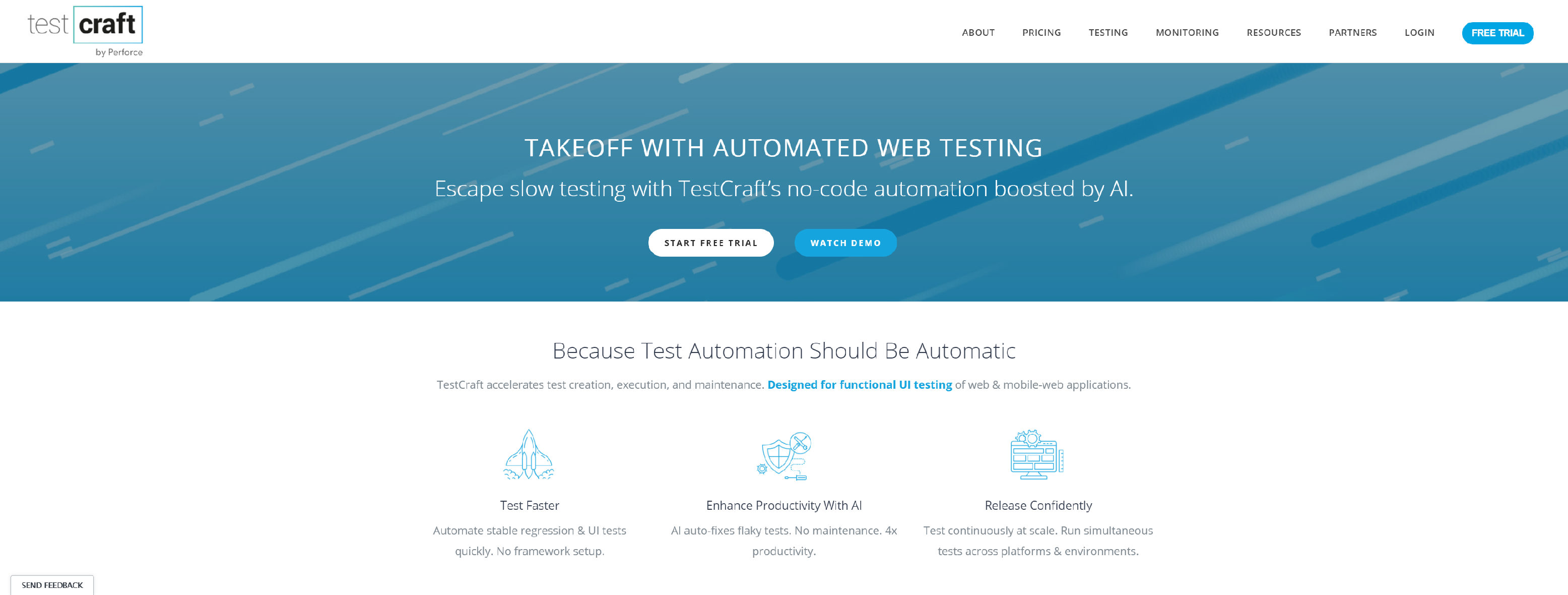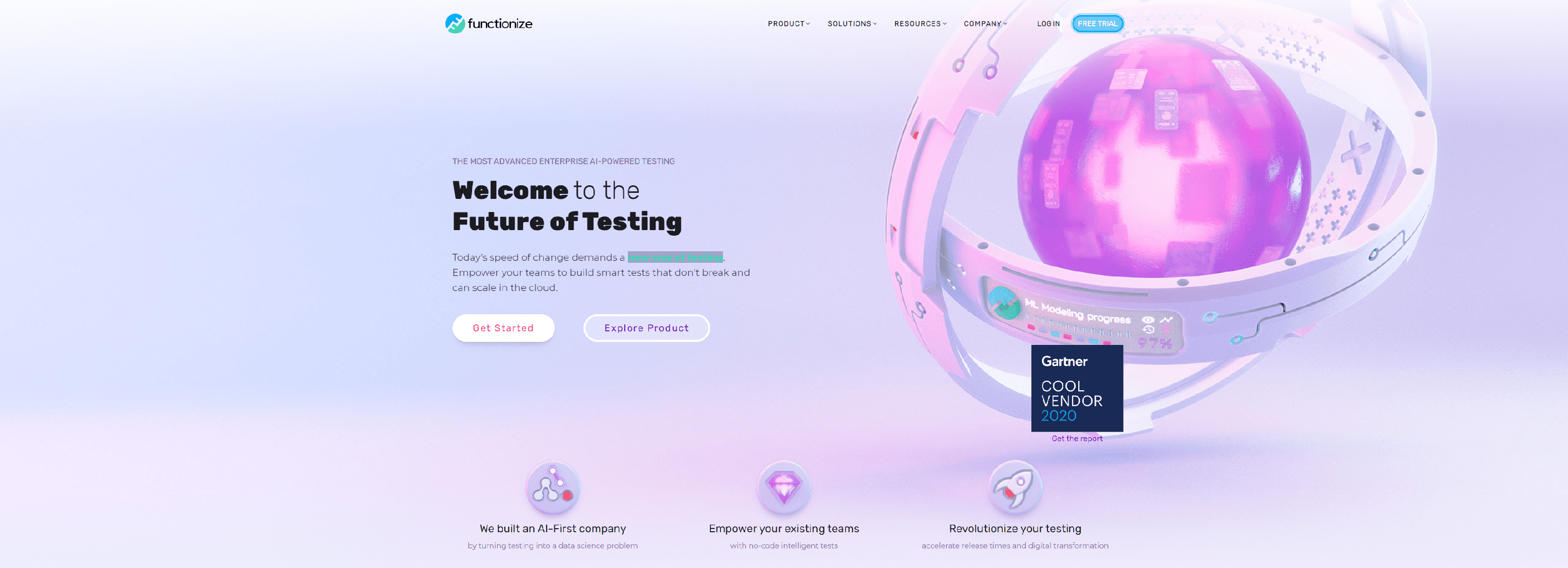Nowadays, with the increase in speed of Project delivery cycles, testing has also become an activity that has to be done rapidly in order to match the pace. In traditional automation, significant time is needed to recognize the test scenarios, develop automation scripts and finally the maintenance of the scripts. Considering all these activities, it is extremely challenging to ensure maximum coverage of the tests and hence to tackle these pain points, the ideal solution would be to bring Artificial Intelligence (AI) into Test Automation. Not only has it helped developers with more useful software but it has also empowered testing teams to shift from slow manual testing to automated validation models that accelerate the time to market.
Automation is one of the most innovative technologies that has enhanced testing needs for substantial automation. But, nowadays, automation test suites are efficient only for some releases, placing even greater pressure on testing teams to revise test suites, so they can keep pace with frequent change requests. To address these challenges, artificial intelligence is emerging as a viable alternative to traditional automation test suites.
While traditional automation usually analyzes whether the software works as it is supposed to, the advent of new technologies like artificial intelligence and machine learning can support the evolution of QA into an entirely automated model that requires minimal or no human intervention. Testing automation has transformed the process of achieving greater efficiency, scale, and more rapid time to market with improved coverage. Now, with the insights produced by artificial intelligence and machine learning algorithms, it is possible to up the ante by optimizing and constantly improving the software development lifecycle, making more intelligent decisions based on prescriptive analytics.
What is Artificial Intelligence (AI)?
Simply put, AI is the ability of machines to perform tasks and activities that we regard as ‘intelligent.’ AI, more broadly defined, is the ability of an intelligent system to observe its environment and perform specific tasks in order to achieve a goal as good as possible.
In testing, the goal is to collect information about the quality and risks of an information system. Artificial Intelligence can confirm this by analyzing the information system and collecting data. This collected data can be used in a report. The AI can also learn from the collected data through supervised and unsupervised learning and thereby become increasingly better at performing the tasks. In the case of unsupervised learning, the algorithm ensures the grouping of data. With supervised learning, people help to determine the grouping, for example by labeling the data.
Main Advantages Of Automated Software Testing using AI
Artificial Intelligence is exhibiting significant potential in recognizing testing defects instantly and reducing human intervention. Such progressions have implemented the ability to resolve how a product will function, both at the machine-level and data-server level. AI just like the other automation tools is going to support the overall testing effort. In the current technological era where the emphasis is on Continuous Testing, CI/CD Integration, and DevOps; Artificial Intelligence can help fasten this process and make testing more efficient.
Following are the major advantages of automated software testing using AI:
- It helps reduce software development and testing cycles, allowing the product to market faster.
- It provides a higher test efficiency and makes full use of hardware resources.
- Saves manpower resources, reduces the cost of tests.
- Enhances the stability and reliability of the test.
- Improves the accuracy and precision of software testing.
Below are a few challenges in test automation and how AI-based test tools are used to address these challenges.
Unreliable Object Recognition: Object recognition is the foundation of UI automation. Traditional automation frameworks and software work based on the locators of these objects in a webpage. It can be ID, Name, XPath, or CSS. When these features of the object are changed by the development team, the traditional test automation tools may be unable to recognize them, and the scripts tend to fail. Manual identification of these objects takes more time, and it can be very cumbersome to update the object repository. These interruptions will slow down the complete test automation process, thereby significantly impacting the software delivery life cycle.
Test Scripts Design & Framework Implementation: Designing a test script requires significant technical skills and this may not be easily achieved by a non-technical person. Also, some of the key factors like reusability, parameterization, test data management might not be addressed. Artificial Intelligence and Machine Learning eliminate these dependencies and will generate automated scripts by reading English test cases from spreadsheets. The programs use Natural Language Processing (NLP) to understand the manual tests and auto-generate the scripts. Therefore, if the purpose of the test procedure is right, the artificial intelligent platforms produce automated scripts that can be applied by any individual in the project teams.
Inadequate Test Prioritization: Test case prioritization is a challenge faced by project teams whereas QA teams are not quite sure about the minimum number of test scripts to be run for a given code fix. In fact, several enterprises are using AI tools to analyze with precision, the smallest number of tests that need to be run to test a piece of changed code. These tools will be able to offer suggestions based on the data they collect to identify tests that frequently fail, such as what piece of code is written by a developer or if the developer is more likely to develop buggy code, etc.
The Different AI-powered Test Automation Tools
TestCraft

TestCraft uses AI to develop test maintenance and reduce the flakiness of tests. This is helpful for testing and QA teams who would like to stay updated with the frequent releases while still producing high-quality work.
Applitools

Automated visual testing is a method to confirm that your application appears to the user as you expected. The Applitools Eyes API can be used to complement or encompass functional declarations with fewer strings of code and more test coverage.
Functionize

Functionize provides extensive performance insights without any additional steps. The fundamental features include benchmark web-tier services, back-end processes, and throughput analysis on payment and other external APIs.
Testim

Testim helps accelerate the delivery of high-quality software. Testim’s Artificial Intelligence-based platform expedites authoring and enhances the stability of automated, end-to-end tests. Testim gives QA teams the extensibility to design and manage tests their way codeless, coded, or both.
Conclusion
Complete end-to-end test automation solution that requires minimal or no human intervention is the goal of software development companies. To do this, testing teams should stop viewing automation test suites as static entities and start considering these as dynamic ones with a constant influx of changes and design solutions. New technologies like Artificial intelligence can help organizations adopt end-to-end automation models. As agile and DevOps become critical for software development, testing teams must move beyond manual testing and adopt AI/ML-based testing in order to proactively improve software quality and support self-healing test automation.